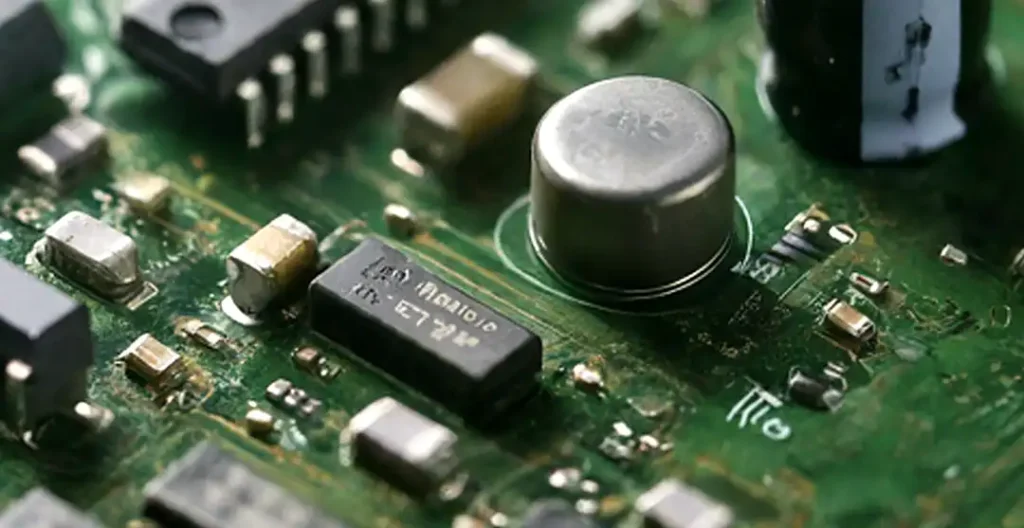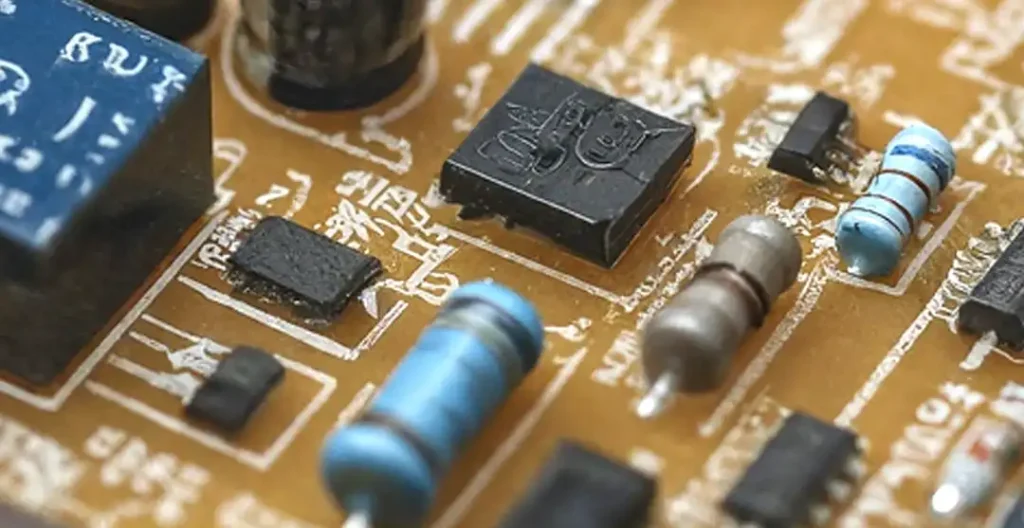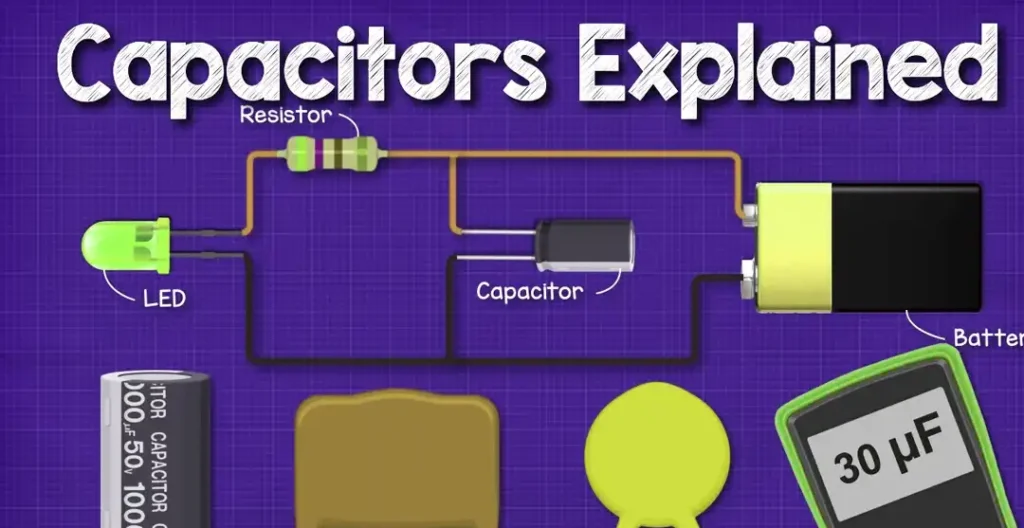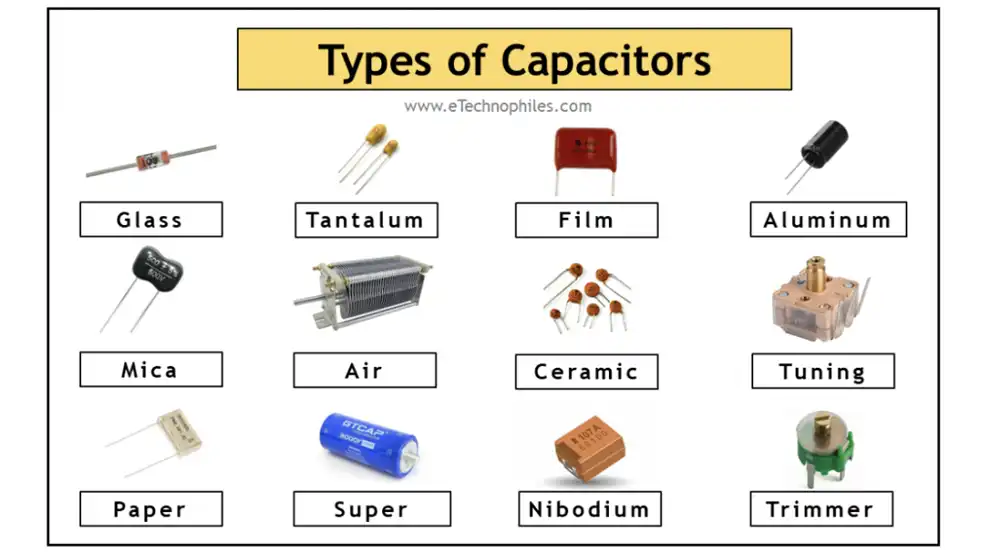In the world of component electronics, capacitors stand as silent but essential components, often overlooked yet crucial for the functionality of countless devices.
Understanding what a capacitor is and how it operates can shed light on its significance in powering everything from smartphones to spacecraft.
What is a Capacitor?

What are capacitors?
A capacitor, in its simplest definition, is an electronic component that stores electrical energy in an electric field. Acting as a temporary reservoir, it holds a charge that can be released when needed, making it a versatile tool in electronic circuits.
Capacitors are electronic components used in electrical circuits to store and release electrical energy. They consist of two conductive plates separated by an insulating material called a dielectric. When a voltage is applied across the plates, one plate accumulates a positive charge while the other accumulates a negative charge, creating an electric field between them. This process allows capacitors to store energy in the form of an electric field.
Capacitors come in various shapes and sizes, ranging from small ceramic disks to large electrolytic capacitors used in power supply circuits. They have a wide range of applications in electronics, including smoothing out voltage fluctuations, filtering signals, and timing circuits.
What Does a Capacitor Do

A capacitor is an electrical component that stores and releases electrical energy. Think of it as a small, rechargeable battery, but instead of using chemicals to store energy, it uses an electric field.
When you connect a capacitor to a power source, it charges up by accumulating electrons on one plate and removing electrons from the other plate. This creates an electric field between the plates, which stores energy.
Now, here’s where it gets interesting. When you disconnect the power source, the capacitor retains the stored energy. It can then release this energy back into the circuit when needed, providing a burst of power. This ability to store and release energy quickly makes capacitors incredibly useful in electronics.
How Capacitors Work

Think of a capacitor as a tiny storage tank for electrical energy. It’s made up of two conductive plates separated by an insulating material called a dielectric. When you apply a voltage across the plates, electrons start to accumulate on one plate while an equal number of electrons are drawn away from the other plate, creating an electric field between them.
This electric field stores energy in the capacitor. The amount of energy it can store depends on the capacitance of the capacitor, which is determined by factors like the surface area of the plates, the distance between them, and the type of dielectric material used.
Once the capacitor is fully charged, it can hold onto that electrical energy until it’s needed. When you connect a capacitor to a circuit, it can release that stored energy back into the circuit, providing a burst of power. This makes capacitors very useful in various electronic applications, like smoothing out power supplies, filtering out noise, and even storing data in some types of memory.
Types of Capacitors

There are several types of capacitors, each with its own characteristics and applications:
Ceramic Capacitors: These are among the most common types of capacitors. They’re made of ceramic materials and have high capacitance values for their size. They’re used in a wide range of applications, including decoupling, filtering, and timing circuits.
Electrolytic Capacitors: Electrolytic capacitors have a higher capacitance than ceramic capacitors and are often used when larger capacitance values are required. They’re polarized, meaning they have a positive and negative lead, and they must be connected in the correct orientation in a circuit. Electrolytic capacitors are commonly used in power supply filtering and audio applications.
Tantalum Capacitors: Tantalum capacitors are a type of electrolytic capacitor known for their high capacitance density and stability over a wide temperature range. They’re often used in compact electronic devices where space is limited.
Film Capacitors: Film capacitors are made of a thin plastic film as the dielectric material. They’re known for their high precision and stability, making them suitable for applications like timing circuits, audio systems, and filtering.
Polymer Capacitors: Polymer capacitors are a type of electrolytic capacitor that uses a conductive polymer as the electrolyte. They offer high capacitance values, low equivalent series resistance (ESR), and high ripple current capability. They’re commonly used in power supply and high-performance electronic circuits.
Variable Capacitors: Unlike fixed capacitors, variable capacitors have an adjustable capacitance value. They’re used in tuning circuits for radios, televisions, and other electronic devices where the capacitance needs to be changed to adjust the frequency.
FAQs about Capacitors
How do capacitors store energy?
Capacitors store energy by accumulating opposite charges on their plates, separated by a dielectric material. This separation creates an electric field, effectively storing electrical energy.
What are the main types of capacitors?
The main types of capacitors include ceramic capacitors, electrolytic capacitors, tantalum capacitors, and film capacitors, each with unique properties suited for specific applications.
Can capacitors hold a charge indefinitely?
While capacitors can hold a charge for a significant amount of time, they are not immune to leakage, which gradually dissipates stored energy. However, some capacitors, like supercapacitors, offer extended charge retention compared to traditional types.
How do capacitors differ from batteries?
Unlike batteries, which store energy through chemical reactions, capacitors store energy electrostatically. This difference in storage mechanisms results in distinct characteristics, such as rapid discharge rates for capacitors compared to batteries.
What factors affect capacitor performance?
Capacitor performance can be influenced by factors such as temperature, voltage rating, capacitance value, and frequency. Understanding these variables is crucial for selecting the right capacitor for a given application.
Are capacitors recyclable?
Yes, capacitors are recyclable, with various materials such as aluminum, tantalum, and ceramics being recoverable. Recycling not only conserves resources but also helps mitigate environmental impact by reducing electronic waste.
Conclusion:
In conclusion, capacitors serve as indispensable components in modern electronics, storing and releasing electrical energy with precision.
From powering everyday devices to facilitating breakthroughs in technology, their significance cannot be overstated. By understanding the fundamentals of capacitors and their applications, we unlock the potential for innovation and advancement in various industries.